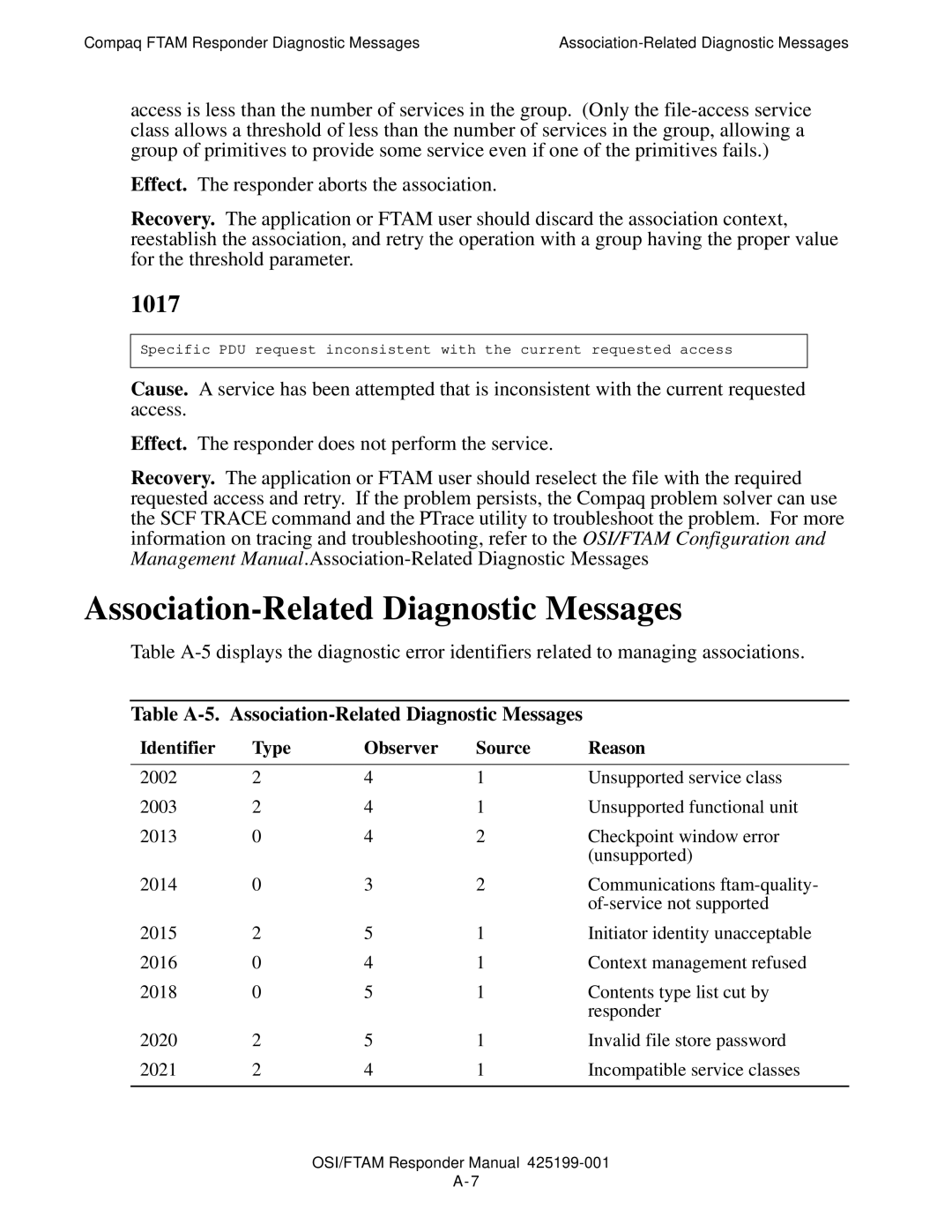
Compaq FTAM Responder Diagnostic Messages |
access is less than the number of services in the group. (Only the
Effect. The responder aborts the association.
Recovery. The application or FTAM user should discard the association context, reestablish the association, and retry the operation with a group having the proper value for the threshold parameter.
1017
Specific PDU request inconsistent with the current requested access
Cause. A service has been attempted that is inconsistent with the current requested access.
Effect. The responder does not perform the service.
Recovery. The application or FTAM user should reselect the file with the required requested access and retry. If the problem persists, the Compaq problem solver can use the SCF TRACE command and the PTrace utility to troubleshoot the problem. For more information on tracing and troubleshooting, refer to the OSI/FTAM Configuration and Management
Association-Related Diagnostic Messages
Table
Table A-5. Association-Related Diagnostic Messages
Identifier | Type | Observer | Source | Reason |
|
|
|
|
|
2002 | 2 | 4 | 1 | Unsupported service class |
2003 | 2 | 4 | 1 | Unsupported functional unit |
2013 | 0 | 4 | 2 | Checkpoint window error |
|
|
|
| (unsupported) |
2014 | 0 | 3 | 2 | Communications |
|
|
|
| |
2015 | 2 | 5 | 1 | Initiator identity unacceptable |
2016 | 0 | 4 | 1 | Context management refused |
2018 | 0 | 5 | 1 | Contents type list cut by |
|
|
|
| responder |
2020 | 2 | 5 | 1 | Invalid file store password |
2021 | 2 | 4 | 1 | Incompatible service classes |
|
|
|
|
|
